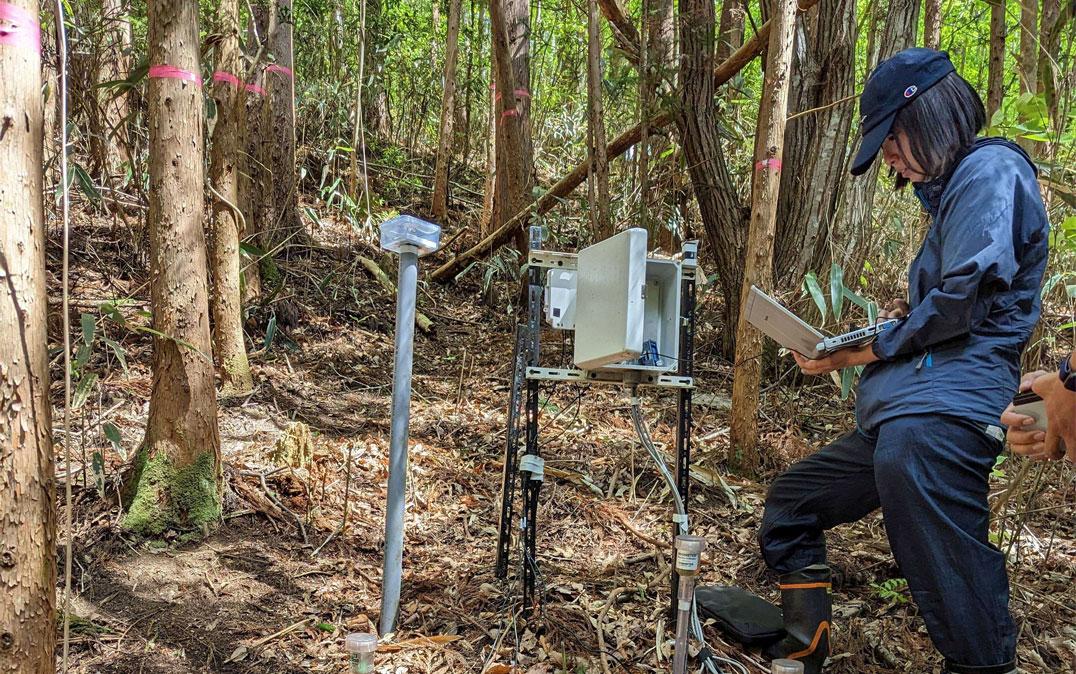Research News
A Model Explaining the Changes in Air Radiation Dose Rate Due to Rainfall

After the Fukushima Dai-ichi Nuclear Power Plant accident, the air dose rate considerably increased in the forests of Fukushima Prefecture. Researchers from the University of Tsukuba developed a model for estimating the rainfall-induced variations in air dose rates based on the field observations of soil moisture content and air dose rates. This model can accurately quantify the long-term decreasing trend of air dose rates while eliminating the effects of rainfall.
Tsukuba, Japan—The 2011 Fukushima Dai-ichi Nuclear Power Plant accident caused the release and deposition of radionuclides, resulting in an increase in air dose rates in the forests of Fukushima Prefecture. Despite the steady long-term reduction in air dose rates because of physical attenuation and decontamination, temporary changes, such as a decrease after rainfall and an increase during dry weather, in air dose rates were observed, causing apprehension among local residents.
The post-rainfall decrease in air dose rates is presumably caused by the enhanced radiation shielding effect owing to increased soil moisture content. However, to date, no research has quantified the effects of soil moisture on air dose rates.
Accordingly, this study developed a model for estimating the rainfall-induced variations in air dose rates based on the field observations of soil moisture content and air dose rates. Notably, this method enables estimation of air dose rates even when soil moisture data are absent.
Observations regarding air dose rates were conducted in two areas of the Fukushima Prefecture (Namie Town and Kawauchi Village). In Namie Town, the air dose rate decreased with increasing soil moisture and the variations in air dose rates could be explained by the amount of rainfall. Similarly, in Kawauchi Village, the soil moisture could be estimated based on the effective rainfall. Although the air dose rate exhibited considerable variations, the trend of fluctuation could be estimated.
This approach can aid in accurately quantifying the long-term decreasing trend of air dose rates by eliminating the effects of rainfall, thereby providing an accurate assessment of the environmental recovery of Fukushima.
###
This work was supported by the Grant-in-Aid for Scientific Research on Innovative Areas [grant number 24110005]; Grant-in-Aid for Scientific Research (A) [grant number 22H00556]; Agence Nationale de la Recherche [grant number [ANR-11-RSNR-0002]; and the Japan Science and Technology Agency, as part of the Belmont Forum.
Original Paper
- Title of original paper:
- Changes in air dose rates due to soil moisture content in the Fukushima prefecture forests
- Journal:
- Environmental Pollution
- DOI:
- 10.1016/j.envpol.2023.122147
Correspondence
Professor ONDA Yuichi
Center for Research in Radiation, Isotopes, and Earth System Sciences (CRiES) / Institute of Life and Environmental Sciences, University of Tsukuba
Related Link
Institute of Life and Environmental Sciences
Center for Research in Radiation, Isotopes, and Earth System Sciences (CRiES)





